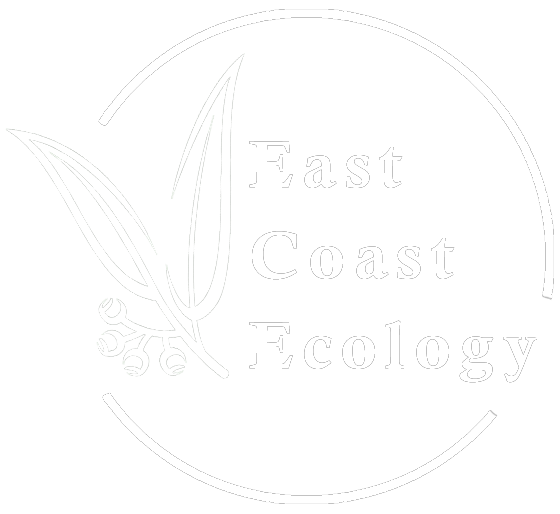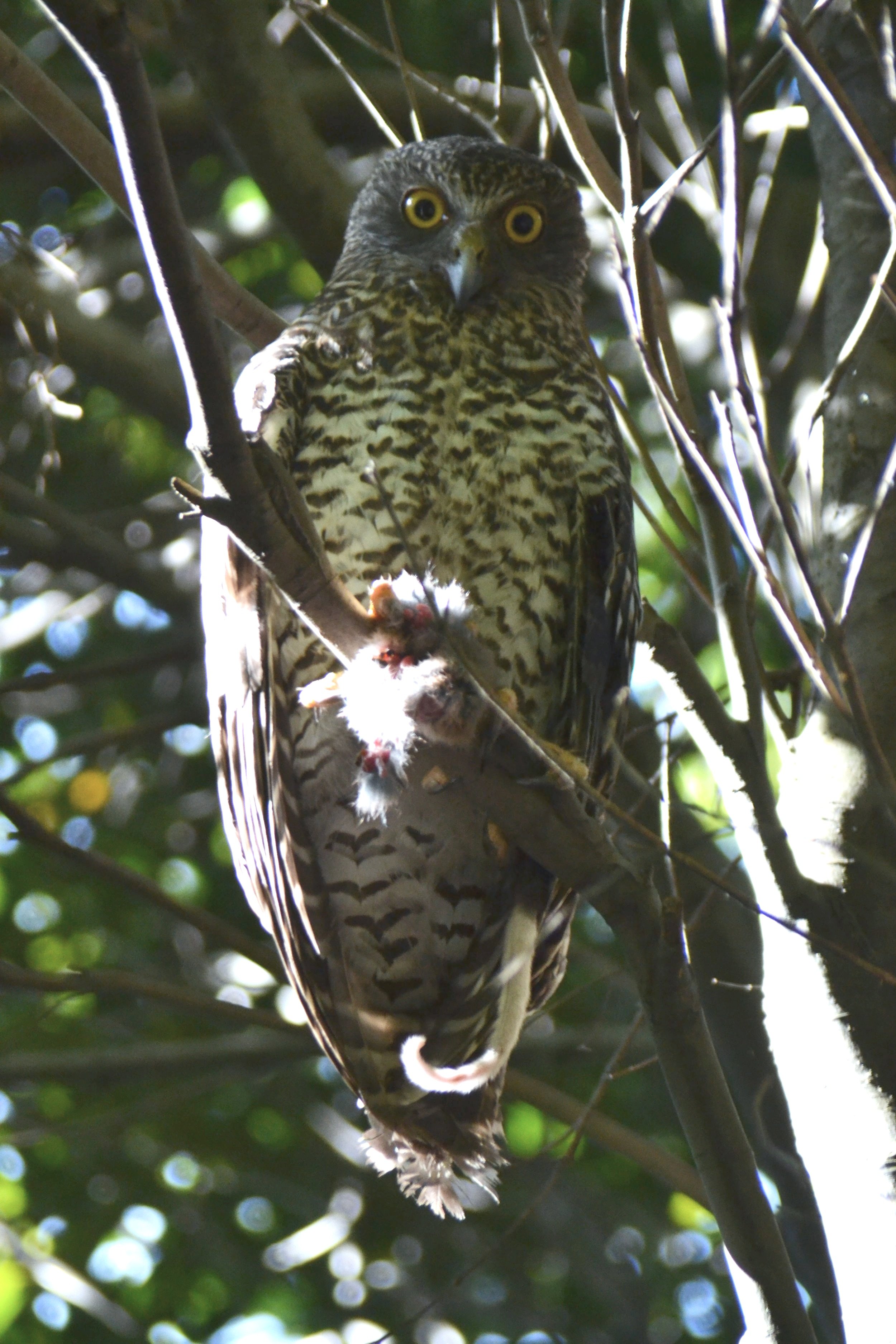
Test of Significance - Part 5 Assessment
What is a 5-Part Test?
A 5-Part Test (Test of Significance) determines if a development or activity is likely to significantly impact threatened species, ecological communities, or their habitats.
The Test of Significance is detailed within Section 7.3 of the Biodiversity Conservation Act 2016 (NSW), and is applied to all species and ecological communities listed under Schedules 1 and 2 of the Act.
When a proponent is submitting a Development Application (DA) that may impact upon threatened entities or their habitats, they will be required to prepare a test of significance within their Flora and Fauna Assessment Report. The assessment is conducted by examining the scale of impacts on threatened species, threatened vegetation and habitats.
Swift Parrot (Lathamus discolor)
Critically Endangered
Koala (Phascolarctos cinereus)
Endangered
Pale-headed Snake (H. bitorquatus) Vulnerable
Bauer's Midge Orchid (G. Baueri)
Endangered
Need a 5-Part Test Completed?
Give us a call, send us an email or fill out the contact form and one of our experts will get back to you shortly.
PHONE: 02 7813 6119
EMAIL: admin@ececology.com.au
Powerful Owl (Ninox strenua)
Vulnerable
When is a 5-Part Test required?
A 5-Part Test (Test of Significance) is required for any Development Application (DA), that may impact a threatened species or ecological community.
Under Part 4 of the Environmental Planning and Assessment Act 1979, developers are required to prepare a 5 -part test to as part of section 7.3 of the Biodiversity Conservation Act 2016 if the proposed area of development:
Is not currently located in a mapped-out section of the NSW Biodiversity Values (BV) map.
Does not exceed the area clearing threshold for the Biodiversity Offsets Scheme.
Most times, it is difficult for an Applicant to determine whether their Development Application will require a Test of Significance, subsequently, it may be useful to:
Contact a qualified and licensed Ecological Consultant to determine whether a Test of Significance might be required (this can be undertaken at no cost over the phone by East Coast Ecology's qualified and licenced ecological consultants), or
Apply for a Pre-Lodgement Meeting with Council, where Council can advise you whether your Development Application is required to be accompanied by a Test of Significance.
Part 5 Activities, which are public works undertaken by Government Authorities, must also be accompanied by a Test of Significance if it may impact upon threatened species or ecological communities.
What are the 5 Parts of the Test of Significance?
1. The impact on the life cycle of a threatened species
Determining whether the proposed development or activity will be likely to adversely impact the life cycle of the species such that a viable local population of the species may face the risk of extinction.
2. The impacts on ecological communities
As an add-on to the above, where the development works may cause on any threatened ecological communities present in the area to be placed at risk of extinction due to potential changes in community structure, function, and viability due to the development.
3. The impact on critical habitats
Determining if the development will significantly damage or destroy such critical habitat areas that have been identified as essential for the survival of a threatened species or ecological community.
4. The impacts on declared areas of outstanding biodiversity value
Evaluating the potential impact of the development on the specific ecological processes, biological processes, or habitat integrity that are essential to the existence of areas of outstanding biodiversity value (AOBV).
5. The impacts on key threatening processes
Assessing the potential role that the development activity may play in causing or aggravating key threatening processes in the locality.
Why choose East Coast Ecology?
East Coast Ecology is comprised of a close-knit team of qualified Ecologists, Environmental Scientists, and Bushfire Practitioners. The team has helped clients successfully deliver hundreds of Development Applications, State Significant Developments, and State Significant Infrastructure projects across NSW.
An ecologist qualified to prepare a Flora and Fauna Assessment (FFA) like East Coast Ecology must have relevant insurance and licenses issued by the Department of Planning & Environment (DPE) and Department of Primary Industry (DPI) and a degree in Environmental Science or a related field.
At East Coast Ecology, our ecologists are also accredited under the Biodiversity Assessment Method (BAM), which is essential so we can help you navigate the Biodiversity Offset Scheme and avoid you paying for expensive credits. Our team consists of practising members of the Ecological Consultants Association (ECA) who have a background in scientific research and hold a doctoral degree in ecology,
East Coast Ecology is experienced in reviewing Flora and Fauna Assessments (FFA) in the role of Local Government Reviewer, knowing what pitfalls to avoid during report preparation.
East Coast Ecology services the entirety of New South Wales. This includes Western Sydney to Greater Sydney, Blue Mountains, Newcastle, Central Coast, Port Macquarie, North Coast, Shoalhaven, Eurobodalla, Hunter Valley, Wollongong, Illawarra, Southern Highlands, Central West, and the rest of regional New South Wales.
What Is Included in a 5-Part Test from East Coast Ecology?
At East Coast Ecology our 5-Part Tests are prepared to a high standard and are easy to read and interpret for you and other stakeholders. This is why we breakdown our 5-Part Test into easy-to-manage sub-categories as follows:
INTRODUCTION
Identification and description of the site.
Description of the proposed development and references to plans and reports used for the Flora and Fauna Assessment Report.
The regional context and physical description of the study area including hydrology, geology, soils, landforms, climate and types and conditions of the habitat(s) in, and adjacent to, the land affected by the proposal.
Flora and Fauna context that included the animals and types of vegetation in the area.
LIST OF THREATENED SPECIES
It is crucial to provide an up-to-date context of the threatened species and vegetation in the proposed area.
The list of potential species should be provided to a consent authority/determining authority along with the test of significance. Reasons should be provided to show how the list was developed and why any threatened species recorded have been omitted.
A species does not have to be considered as part of the test of significance if recent and reliable data relating to the study area and site, derived from field surveys, are consistent with OEH guidelines, clearly show that the species:
Does not occur in the study area
Will not use on-site habitats on occasion
Will not be influenced by off-site impacts of the proposal.
DETERMINING THE SIGNIFICANCE - 5-PART TEST
The following is to be taken into account to determine whether a proposed development or activity is likely to significantly affect threatened species or ecological communities, or their habitats:
Adverse Effects on the Life Cycle of a Species
In the case of a threatened species, whether the proposed development or activity is likely to harm the life cycle of the species.
Adverse Effects on Ecological Communities
In the case of an endangered ecological community or critically endangered ecological community, whether the proposed development or activity:
I. Is likely to have an adverse effect on the extent of the ecological community such that its local occurrence is likely to be placed at risk of extinction, or
II. Is likely to substantially and adversely modify the composition of the ecological community such that its local occurrence is likely to be placed at risk of extinction.
Adverse Effects on Habitats
In relation to the habitat of a threatened species or ecological community:
I. The extent to which habitat is likely to be removed or modified as a result of the proposed development or activity
II. Whether an area of habitat is likely to become fragmented or isolated from other areas of habitat as a result of the proposed development or activity
Adverse Effects on Areas of Outstanding Biodiversity Value
The importance of the habitat to be removed, modified, fragmented or isolated to the long-term survival of the species or ecological community in the locality,
I. Whether the proposed development or activity is likely to have an adverse effect on any declared area of outstanding biodiversity value (either directly or indirectly),
KEY THREATENING PROCESSES
Whether the proposed development or activity is or is part of a key threatening process or is likely to increase the impact of a key threatening process.
CONCLUSION
A statement summarising the overall direct, indirect, ongoing and cumulative impacts of the proposal to threatened entities and important wildlife habitat.
How long will a Test of Significance take to complete?
The exact duration for completion of a Test of significance can vary from a few weeks to several months depending on the ecological data, field surveys, and scientific assessments required to gain an accurate measurement of the proposed development’s impact on the location’s biodiversity.
At East Coast Ecology, we work closely with developers to understand the scale of the proposed work in order to provide an estimated timeline for when the Test of Significance will be completed, as well as support throughout the entire process up to obtaining DA.
Contact us
for a free quote
We would love to hear from you.
Give us a call, send us an email or fill out the contact form and one of our experts will get back to you shortly.
PHONE: 02 7813 6119
EMAIL: admin@ececology.com.au







